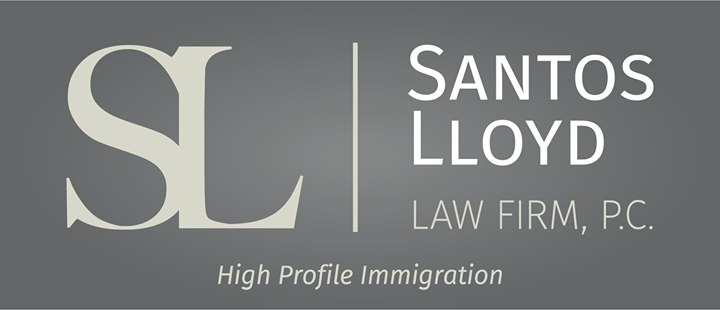Taxation of U.S. Residents: Green Card vs Substantial Presence
Olga Guzhva • March 21, 2024
If you are a U.S. resident within the meaning of Internal Revenue Code (IRC) section 7701(b)(1)(A), an immigrant needs to understand the U.S. tax obligations.
When you are a permanent resident, your worldwide income is subject to U.S. income tax the same way as a U.S. citizen.
You are a resident of the United States for tax purposes if you meet either the green card test
or the substantial presence test
for the calendar year.
1. “Green Card” Test means that you possess a Permanent Resident Card, Form I-551, also known as a "green card”, at any time during the calendar year.
- You continue to have U.S. resident status, unless: you voluntarily renounce and abandon your resident status, or your resident status is terminated, either by the USCIS, or by a U.S. federal court.
If you meet the green card test at any time during the calendar year, but do not meet the substantial presence test for that year, your residency starting date is the first day on which you are present in the United States as a lawful permanent resident. In other words, if you have your green card for less than a full calendar year, your tax obligations could be less and are calculated as follows:
2. In order to meet the Substantial Presence test, you must be physically present in the United States on at least:
- 31 days during the current year, and
- 183 days during the 3-year period that includes the current year and the 2 years immediately before that, counting:
a. All the days you were present in the current year, and
b. 1/3 of the days you were present in the first year before the current year, and
In other words, a look back applies when calculating a substantial presence test for the U.S. tax purposes. If a green card holder does not meet a substantial presence test, then he or she is subject to U.S. income tax the same way as a U.S. citizen BUT ONLY for a portion of the calendar year, from the date of becoming a U.S. permanent resident.c. 1/6 of the days you were present in the second year before the current year.
Navigating the complexities of the U.S. immigration and tax laws often requires professional legal guidance. Seeking assistance from an experienced immigration attorney well-versed in U.S. taxation can significantly enhance the chances of your successful immigrant planning, ensuring compliance with these intricate regulations and requirements.
If you have any questions about what this means for you, please schedule a consultation with our office.
We look forward to working with you!
This blog is not intended to be legal advice and nothing here should be construed as establishing an attorney client relationship. Please schedule a consultation with an immigration attorney before acting on any information read here.
Olga Guzhva
Similar Posts

Under Publication 519 (2023) , U.S. Tax Guide for Aliens, a nonresident who becomes a U.S. resident under the substantial presence test in the following tax year may choose to be treated as a dual status resident for this taxable year if certain tests are met. You have a dual-status tax year when you have been both a resident alien and a nonresident alien in the same year. Dual status does not refer to your citizenship; it refers only to your immigrant resident status in the United States. In determining your U.S. income tax liability for a dual-status tax year, different rules apply for the part of the year when you are a U.S. resident and the part of the year when you are a nonresident. o When you are a U.S. resident, you are taxed on income from all sources . Additionally, income from sources outside the United States is taxable if you receive it while you are a resident alien. . The income is taxable even if you earned it while you were a nonresident alien or if you became a nonresident alien after receiving it and before the end of the year. The most common dual-status tax years are the years of arrival and departure. Navigating the complexities of the U.S. immigration and tax laws often requires professional legal guidance. If you have any questions about what this means for you, please schedule a consultation with our office. We look forward to working with you!

When considering immigration to the United States, people often search for the ins and outs of the varied visa options, cost of leaving, education opportunities for kids, but they seldom inquire about the implications of the U.S. taxation. If you do a Google search about U.S. immigration, you’d come across a lot of information about varied visas and their eligibility requirements, the process of obtaining a green card or naturalization, and so on. The information about U.S. tax rules would not appear in your Google search unless you specifically search for it. As part of your immigration planning, it is very important to be aware of and understand the U.S. tax obligations, specifically if you have assets in your home country. Additionally, if you decide to open your new U.S. business and apply for an immigrant visa, such as EB-1 or EB-2 NIW, or a non- immigrant visa, such as E-2 or L-1, you’d also want to know what taxes you and your business entity would be required to pay. Even if you don’t immigrate to the United States but choose to work there based on a temporary nonimmigrant visa, you may be subject to U.S. taxation.

Once you have connected with a college program, have been admitted to the school, and deemed eligible to compete athletically, you will need to secure an F-1 student visa in order to actually attend your new college and begin your time as a student athlete. The first step in the visa process is to receive your Form I-2

For many talented athletes around the world, U.S. college athletics represent a remarkable opportunity to combine elite athletic competition with higher education. In sports such as basketball, soccer, track and field, and tennis, among others, hundreds of colleges and universities across the United States offer struct

Under the new regulation, if a person filed or files Form I-589, Application for Asylum and for Withholding of Removal after October 1, 2024, and the application remains pending with USCIS for 365 days, the applicant must pay an Annual Asylum Fee (AAF) on the one-year anniversary of his or her filing date.



